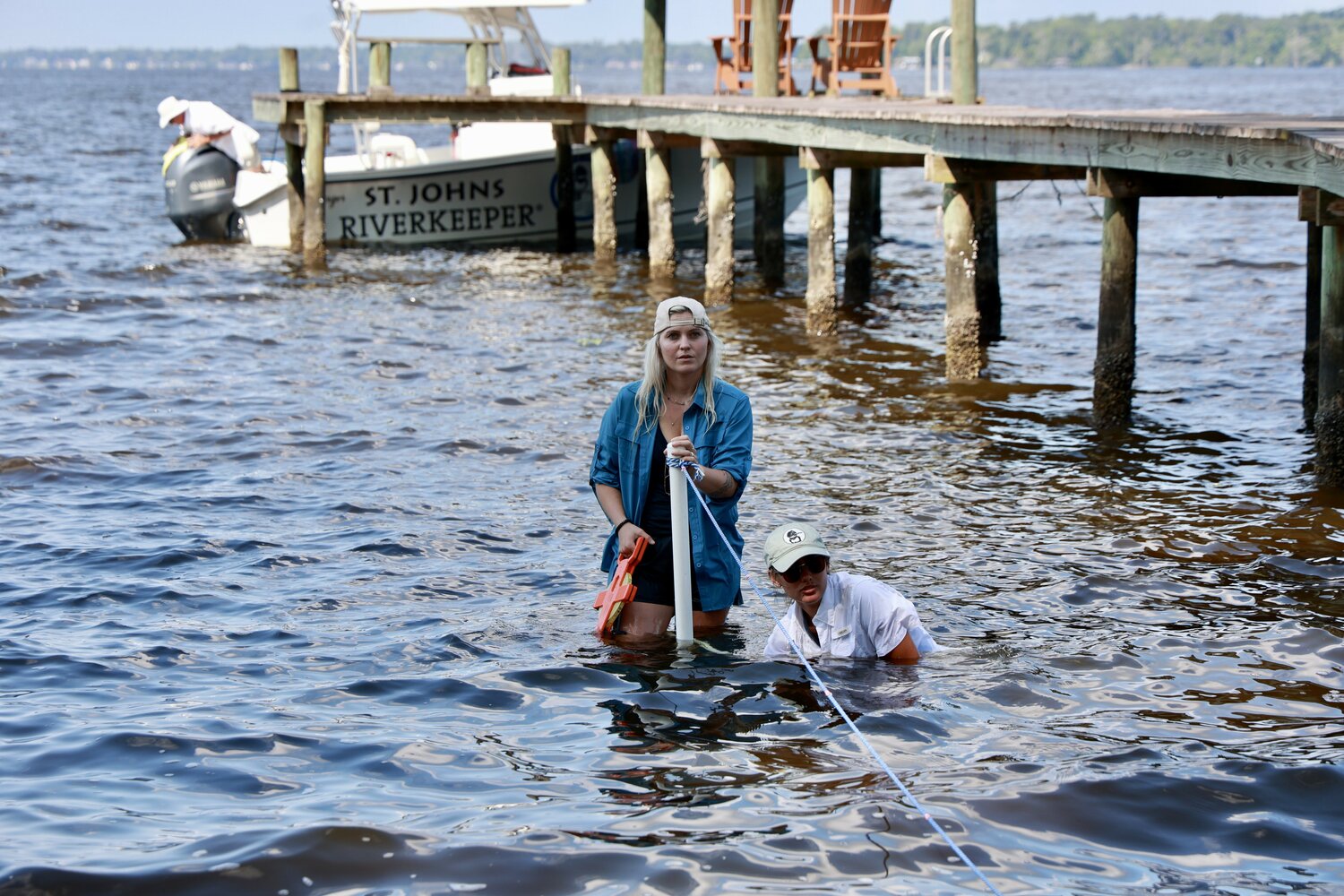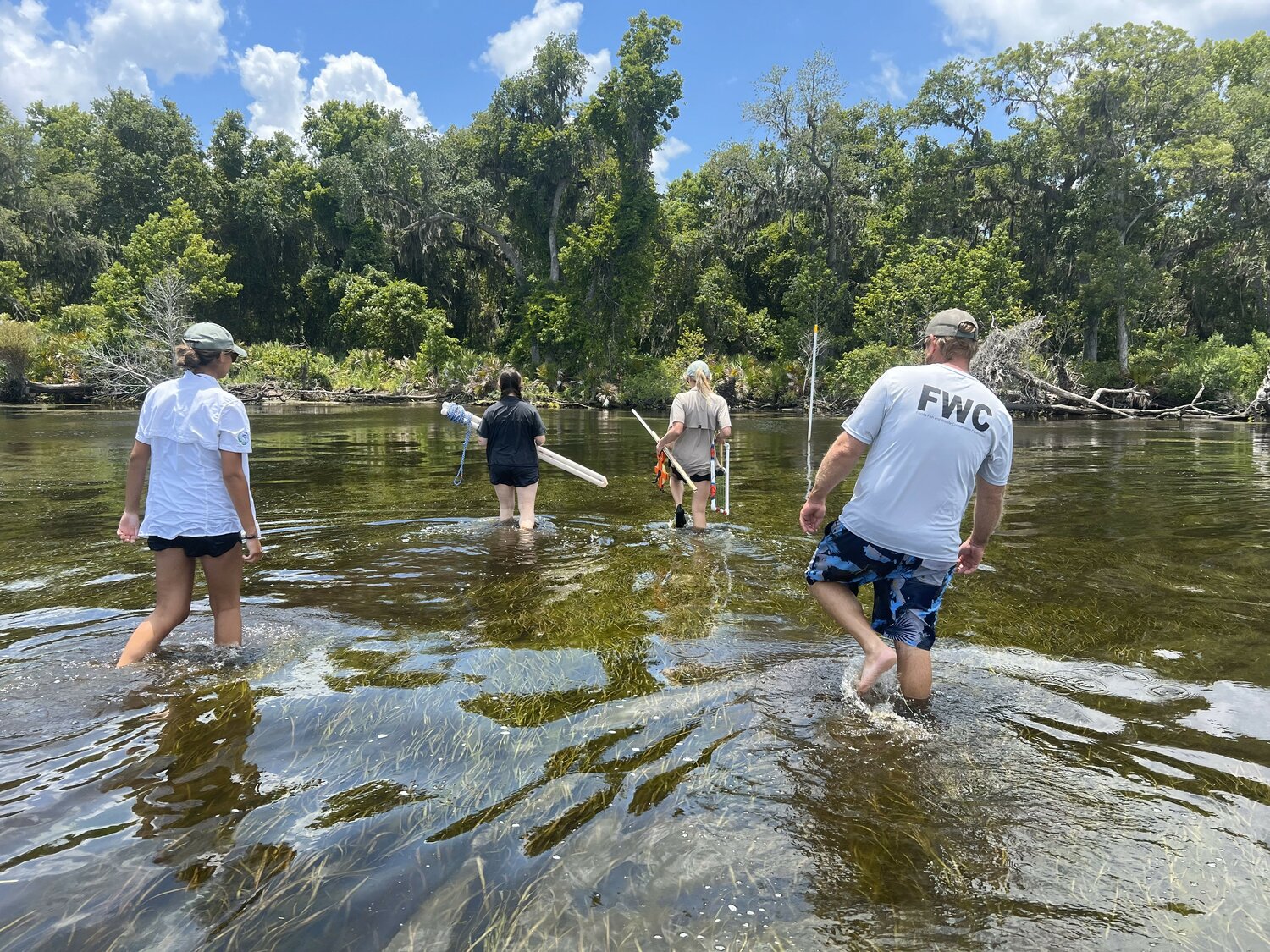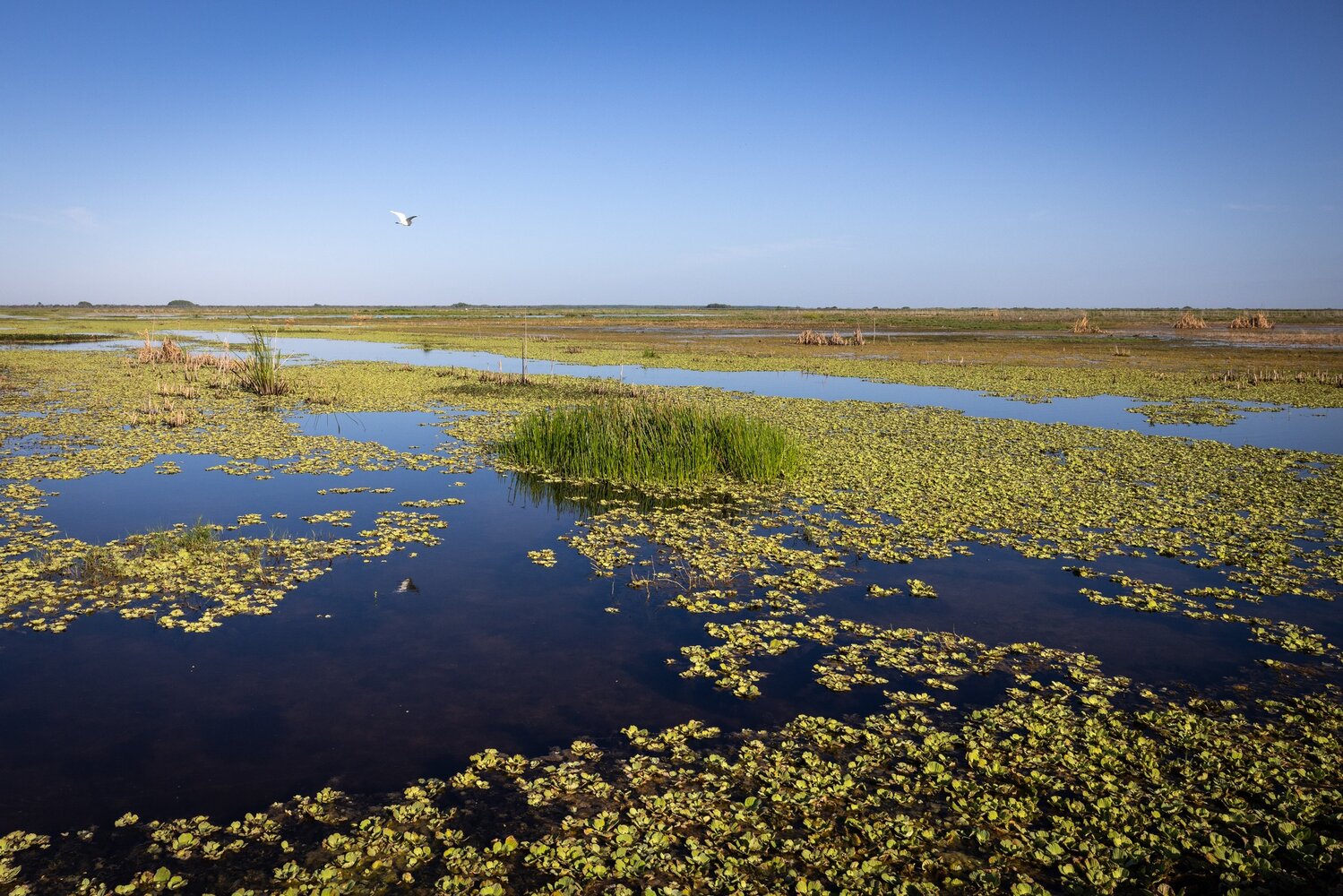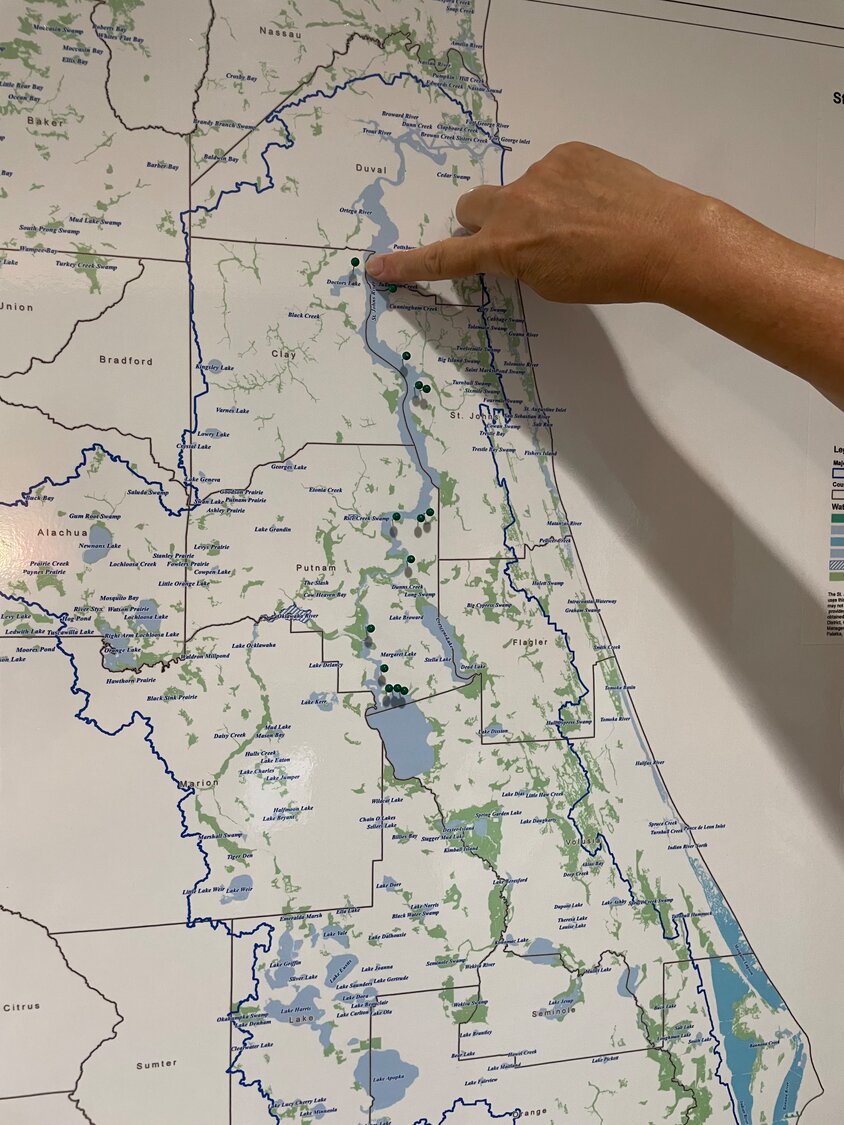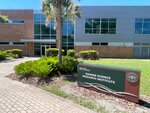South Florida reservoir feared to send pollution to St. Johns River
jack@claytodayonline.com
ST. JOHNS RIVER — "You can't step in the same river twice" is a famous expression, although only partly applicable to Doctors Lake, because if you ever stepped foot in its bath-warm, …
This item is available in full to subscribers.
Attention subscribers
To continue reading, you will need to either log in to your subscriber account, below, or purchase a new subscription.
Please log in to continueDon't have an ID?Print subscribersIf you're a print subscriber, but do not yet have an online account, click here to create one. Non-subscribersClick here to see your options for subscribing. Single day passYou also have the option of purchasing 24 hours of access, for $1.00. Click here to purchase a single day pass. |
South Florida reservoir feared to send pollution to St. Johns River
ST. JOHNS RIVER — "You can't step in the same river twice" is a famous expression, although only partly applicable to Doctors Lake, because if you ever stepped foot in its bath-warm, lime-green waters this summer, last summer — or the summer before that — there is a chance you were ankle deep in a toxic algae bloom.
Doctors Lake, an inlet of the St. Johns, was issued a health advisory from the Florida Department of Environmental Protection for blue-green algae toxins for the third consecutive summer.
Excessive concentrations of nitrogen and phosphorous are the nutrients that create the algae blooms, sometimes appearing as smelly green scum along the water's surface. The sources come from fertilizer runoff, septic leakage, and sewage sludge, also known as biosolids, used in agriculture. Toxins produced by some algae blooms can cause rashes, stomach cramps, nausea, diarrhea and respiratory irritation.
Lisa Rinaman of the St. Johns Riverkeeper, an environmental advocacy group committed to protecting the ecology of Florida’s longest river and its inlets, is concerned about an upcoming development she believes will inevitably redirect polluted waters from South Florida into St. Johns, intensifying the frequency of algae blooms along the 310-mile river body.
The development is called the Grove Land Reservoir, a $400 million state-funded stormwater storage and treatment project planned at the headwaters of the St. Johns, which would redirect water flowing into the Indian River Lagoon by pumping 136 million gallons of water daily into the Upper St. Johns to alleviate the growing water demand in Central Florida.
The SJRK is located on the second floor of the Marine Science Research Institute is at Jacksonville University. The environmental research center has aquariums with fish and turtles and even other researchers.
“Please no tapping on glass, it scares the scientists,” reads one sticky note fixed on a glass window peering into a laboratory.
At the research center, Rinaman expressed her concerns while standing next to a vertical map of St. Johns. Because the river flows north, she is concerned that whatever Grove Land releases into the watershed will pass Sanford, Palatka, Green Cove Springs, Fleming Island, Orange Park and Jacksonville.
Because the reservoir site is in an agricultural area, Rinaman and other environmentalists fear Grove Land will inundate the St. Johns with sewage sludge used as fertilizer in South Florida. Rinaman says South Florida currently trucks "tens of thousands of tons" of sewage to farmland in the reservoir's nearby area.
"They will be forcing pollution from South Florida into the St. Johns River that will trickle down all the way downstream (north),” Rinaman said.
She said the FDEP voiced concerns about Grove Land’s increase in pollution loads, specifically phosphorus.
“If pollution is increased as projected, it will be a domino effect undermining water quality at the very source of the St. Johns,” she said.
The added nutrients Rinaman anticipates will be a boon for blue-green algae blooms at the detriment of aquatic and human health.
Submerged aquatic vegetation, such as eel grasses, could be severely impacted. Rinaman calls eel grasses the “kidneys of the river” due to their biofiltering properties. Much of the SJRK outreach involves cultivating more eelgrass. The team often sails south onboard their boat, the “Kingfisher,” to test waters along the St. Johns and check on growing grass beds.
The eel grasses, fish nurseries and manatee food, have been threatened by added nutrients from runoff and salinity from the Atlantic Ocean’s tidal influences. Rinaman said the dredging along the northern riverbeds has allowed ocean water to push further inland, and from the south, Grove Land will inseminate more nutrients.
The Grove Land project has been mired in mystery. According to the Florida Phoenix, "no state agency has even approved a permit for the privately owned Grove Land project," and "the Legislature offered no bills or resolutions about Grove Land before stuffing this wad of taxpayer cash into the budget like a burglar cramming loot into a bag."
Grove Land was pitched to the St. Johns River Water Management District last November as an alternative water supply for Central Florida. The reservoir would receive excess nutrient-rich water to prevent it from seeping into the already polluted Indian River Lagoon, with the added benefit of supplying water to Central Florida, where the aquifer has been overbooked and demand is rising.
Grove Land is planned to be a 5,000-acre reservoir capable of storing 75,000 acre-feet of water and a 2,000-acre stormwater treatment area. Water will be treated and pumped further north to the St. Johns Upper Basin Canal, where it will begin its northerly journey to the Atlantic Ocean.
Flowing tangential to the St. Johns, the Indian River Lagoon was once regarded as North America's most productive estuary. However, nutrient-rich water flowing east cultivated toxic algae blooms, killing 75% of its seagrasses.
Grove Land is currently being used as a water farm. Before that, it was a citrus farm. The South Florida Water Management District pays Evans Properties, the landowner, to offload nutrient-rich water onto the water farm, which operates like a man-made wetland.
The Florida legislature has directed the SJRWMD to purchase the water farm, which straddles the border between SJRWMD and SFWMD and is located near what was once Fort Drum, a former town located between Yeehaw Junction and Okeechobee.
Ron Edwards is the CEO of Evans Properties. He anticipates water starting to flow north in about 10 years.
“The Indian River Lagoon doesn’t need any of that water. That’s excess water that didn’t used to go there before. If you guys can handle it through the St. Johns system, South Florida would be very happy,” Edwards said during the meeting in November.
“By the time the water gets to Orlando in 10 to 15 years, the straws will be there to take it out,” he said.
Grove Land supporters argue that reducing excess water flowing into the Indian River Lagoon and sending it to where it is needed is a win-win. Proponents also see the connection of the SJRWMD and SFWMD as a way to foster flexibility during dry and wet seasons. If SJRWMD is experiencing drought, SFWMD can offload its water to recoup falling shorelines, and vice versa.
Jim Moir is the executive director of the Indian Riverkeeper, which has the same mission as the SJRK. Although his river has been named a beneficiary, he has concerns similar to Rinaman's.
“This is potentially going to exacerbate an already challenging flooding circumstance,” Moir said.
Central Florida is located in the St. Johns’ middle basin. For the water to get where it is needed, millions of gallons daily must flow downstream through the Upper St. Johns. He is concerned about that hurdle.
“The drainage is complex. I don’t believe the Upper St. Johns needs water,” Moir said.
“We need to be assured that it will be monitored and that the water quantity and quality is known. It may flood horizontally (toward the Indian River Lagoon) if the control structures are not properly designed or accommodating,” he said.
On June 26, the SJRK met with concerned citizens and environmental groups in Indian and Brevard counties to organize a joint citizen oversight effort to ensure whatever is permitted on the Grove Land property provides an “ecological lift” to both the St. Johns and the Indian River Lagoon.
Grove Land’s proponents include its hired consultants, Hazen and Sawyer. During the November meeting, one consultant said the outflow to the Upper St. Johns would contain phosphorous at a concentration of 10 parts per billion, which is 80 parts per billion less than what has been determined to be "critical." Rinaman argues Grove Land has "not provided reasonable assurances for pollution loads."
"Grove Land has not conducted a well-calibrated water quality model to provide a valid estimate, and neither has SJRK. Grove Land made assumptions that do not support their conclusions," Rinaman said.
"As a first step, SJRWMD must conduct a well-calibrated water quality model and Dynamic Model for Stormwater Treatment Area that is set up with the proposed Grove Land configuration," she said.
The $400 million provision to the SJRWMD is one piece of Florida's total $116.5 billion budget. The funding comes with stipulations that compel the District to pursue the project by buying the land and designing, building, and maintaining the Grove Land Reservoir. While SJRWMD must legally move forward with the project, the District says it retains latitude in how the objective will be completed.
"(There are) concerns with any big project. The District won't design or implement a project without ensuring that any flooding or pollution risks are addressed," said SJRWMD Chairman Rob Bradley, a former state senator.
The SJRWMD is adamant the project will be an environmental lift to both water districts. The District responded to Clay Today’s public request: "The project includes measures to address nutrients and flooding and will undergo comprehensive reviews to ensure the project will not have any adverse impacts on the surrounding areas.”
Bradley, too, is adamant: “Clay County won't be impacted at all.”
"There were advocacy groups that opposed the Black Creek Water Resource Development Project. There are always naysayers. Now that the Black Creek project is almost a reality and people are beginning to see the real benefits it will provide, you don't hear the negativity anymore. I suspect this new project will grow in popularity as the public sees its benefits. The District wouldn't move forward with a project unless it provides real benefits to our environment," Bradley said.
The Black Creek Restoration Project is a similar project that is localized in Clay County. The $118 million project is still under construction and is anticipated to send up to 10 million gallons of excess water daily from the South Prong of Black Creek to Alligator Creek and into lakes Brooklyn and Geneva to replenish the Upper Floridan aquifer.
The residents of Keystone Heights have lauded the project, but others have argued that excessive pumping permits caused the issue in the first place. By draining the aquifer, the lake water levels shrank in tandem.
This gets to another crux of Rinaman’s argument. Even if the Grove Land project is a resounding success, it will supply an unquenchable thirst in Central Florida, allowing unceasing development to continue unimpeded.
“This is basically a public subsidy by taxpayers to fuel urban sprawl and harm the St. Johns River, our Florida springs, as well as potentially increase flood risk downstream,” she said.
Rinaman says one body of water should not be sacrificed for another. She and other environmentalists in the oversight effort are organizing and preparing for the not-so-metaphorical floodgates to open. Their eyes are pointed upstream, toward South Florida, watching for whatever comes next to trickle down.

